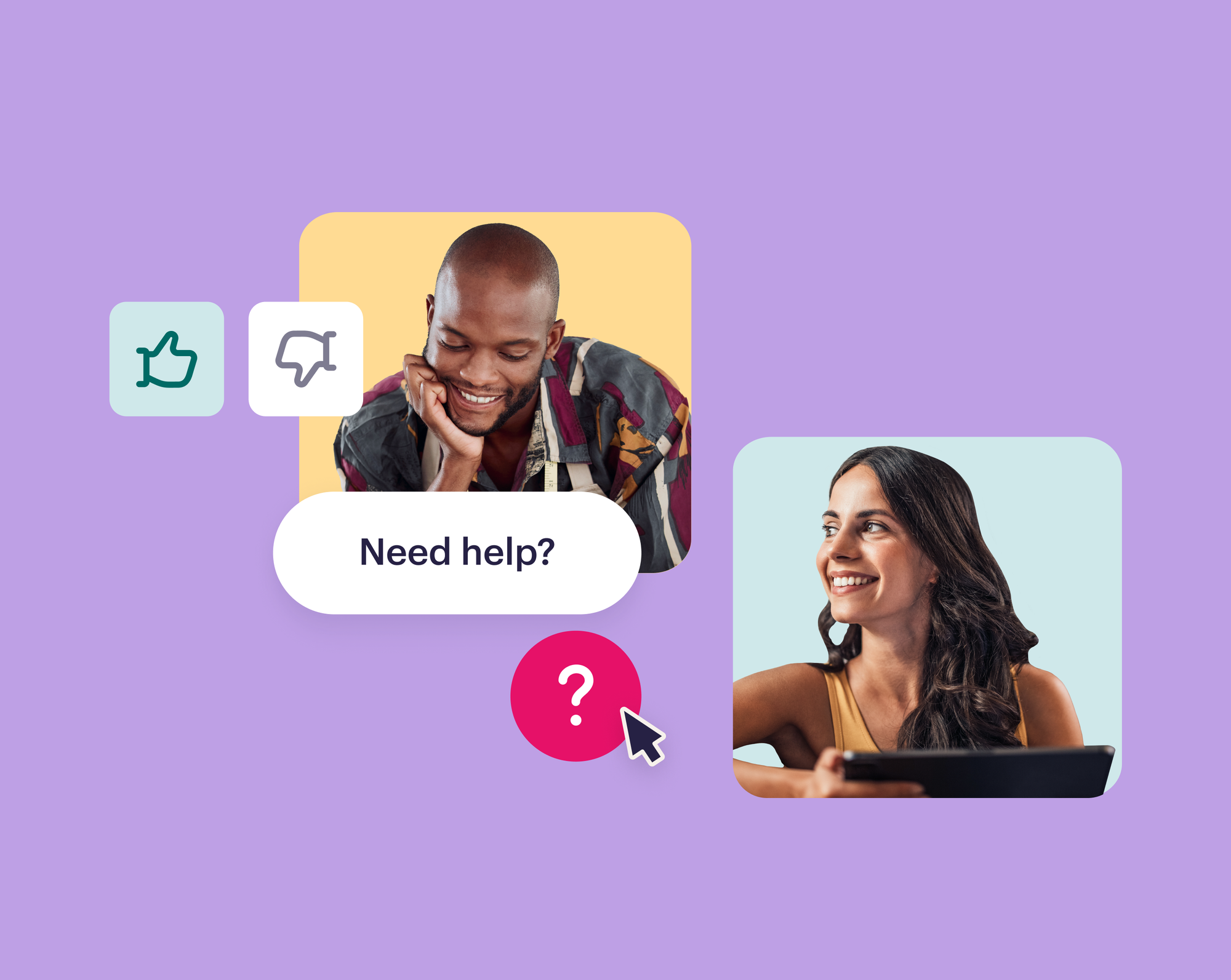What do your support agents excel at? Is it answering the most basic customer questions, or rolling up their sleeves and digging deep into a complex issue? If your answer is the latter, you need call deflection.
If your team consistently jumps on short customer calls that are simple to answer, this costs them up to 40% of their productive time due to context switching. Customers with more nuanced issues don’t stand a chance, and they won’t wait forever.
Want to free up your agents from these low-impact calls and help them focus on more challenging issues? Here’s how to do it with call deflection.
What is call deflection?
Call deflection is the process of reducing the number of incoming customer service calls. The goal of call deflection is to help customers get the solution they need while minimizing the load on customer service agents.
When an agent is on a customer call, it takes 100% of their energy and focus. This is true for basic customer queries and advanced, complex issues alike. That’s why customer calls are considered high-touch customer support. Call deflection helps you make sure the calls that do come through can’t be handled any other way.
Alternative ways to help your customers before they call your customer support are:
- Mid-touch customer support: live chat, SMS
- Low-touch customer support: self-serve solutions like knowledge bases, in-app guides, interactive onboarding
As a result of call deflection, customers get what they need quickly and efficiently, and agents get to focus on more complex issues that require real-time support.
Related Post: How to Use a Knowledge Base for Call Centers: Detailed Guide
Should your company focus on call deflection?
Call deflection is often a controversial topic.
On one end, there are companies like Zappos, whose leading core value is to wow customers through customer service. Zappos wants their customers to call them—they prompt them to do so at the top of their website, 24/7—because that’s how they can build a human connection with them.
On the other hand, there’s the reality that supporting customers predominantly over the phone could be holding you back in multiple ways:
- Phone support can be expensive. Customer service phone interactions can cost you up to $50 per interaction. As you add new products and grow your customer base (especially into new territories), your phone support needs and costs will rise as well, making it harder to scale.
- Your customer support team has a finite number of people and hours. As of 2019, 36% of people expect an instant response over the phone, and 39% expect it within five minutes. If a customer wants an answer right away, but you offer support during limited hours, your customers are overseas in different time zones, or your support team is at call capacity, you’re testing your customer’s patience.
- Not everyone wants to talk to a human to solve an issue. According to Harvard Business Review, 81% of customers try to take care of their issue before reaching out to a live agent. People are busy, multitasking, introverted, or just want to do things on their own schedule.
Still wondering if your company should focus on call deflection? If any of the points above apply to you and your customers, the answer is yes.
With the tools and techniques we’ll cover, you can support every customer exactly the way they want you to with the people and skills you already have (minus the burnout).
Deflect more calls with interactive self-serve help content that your customers will actually read. Follow our 5-step plan to get started.
Call deflection strategies that don’t hurt CSAT
These call deflection strategies will help you reduce the number of incoming customer calls and keep your customer satisfied with the solution they found. You don’t have to trade one for the other.
This isn’t about avoiding customers or making them jump through hoops to get the answer they need. Rather, it’s about helping them find exactly what they need as fast as possible.
These strategies work independently or combined—it’s up to you and the resources you have at hand.
1. Customize user onboarding and education
Your user onboarding needs to hit a simple, but crucial goal: helping the customer experience the aha moment, also known as the wow! moment, as quickly as possible. This is the moment when your customer suddenly sees the benefit they get from using your product.
This moment helps you convert your customer into a fan, retain them as your customer for longer, and turn them into your brand ambassador. In fact, engaged customers buy 90% more frequently, spend 60% more per transaction, and have three times the value compared to customers that don’t engage with your product.
Even more importantly, personalized user onboarding helps you reduce distractions and get your customer to master your product quickly. The trick to make it work? Make it interactive so it supports your customer every step of the way.
Use these questions as guidance in customizing your onboarding:
- What are different goals a user could have when they sign up for your product?
- What are some obstacles they’ve come across when it comes to these goals?
- What unique examples, tips, and suggestions can you offer to help your customer get closer to their goal?
Here’s a snapshot from our own user onboarding at Stonly. We ask specific questions and tailor each next onboarding step based on the user's answers.
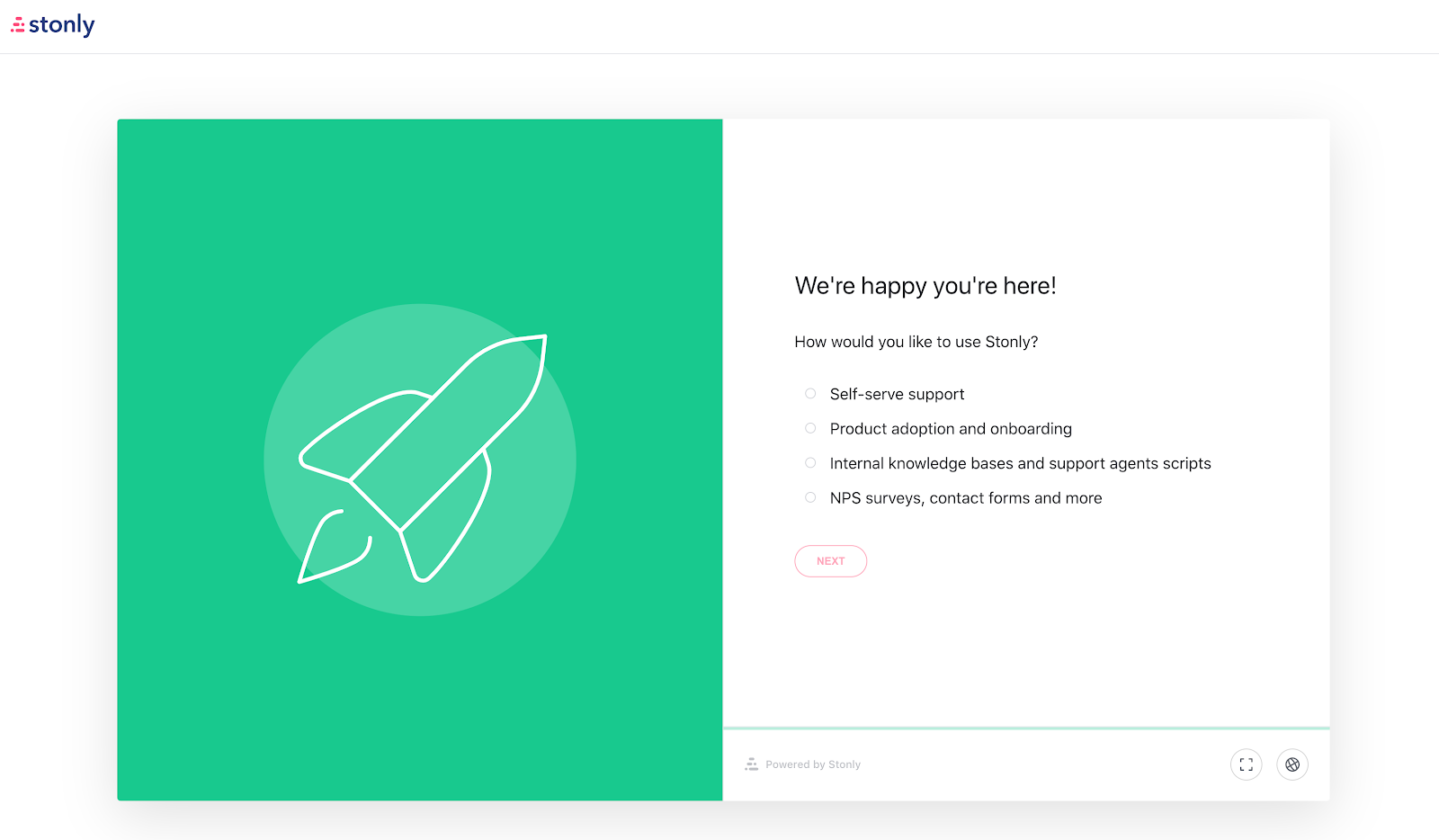
Related post: Customer Service Call Scripts: Benefits, Tips, and Templates
2. Add tooltips to crucial points of friction
Are there parts of your product that customers struggle with more than any other? If so, these are great spots to introduce tooltips and remove the need to contact customer support.
Here are some ways you can find these friction points:
- Analyze customer support phone calls and look for complaints that come up most often
- Analyze written customer communication and find those where customers used screenshots to explain where they struggle
- Use behavior analytics tools like heatmaps (for aggregate reports) and session recordings (for reviewing individual sessions) to see what customers focus on, ignore, where they get stuck, what makes them rage-click, and so on
Add tooltips to your product to create clarity and extra context in places your customers usually struggle. Tooltips may seem overly simplistic, but you can make them as in-depth as the situation requires.
Instead of a simple line of text, you can add a full walkthrough and help your customer right where they’re stuck without making them contact you.
For example, Cabinet Door Store uses tooltips in their checkout process. If you’re in the middle of buying a cabinet door and need to learn about wood species or inlaying glass, Cabinet Door Store doesn’t want you to leave. So they use Stonly tooltips to deliver that information right there in checkout.
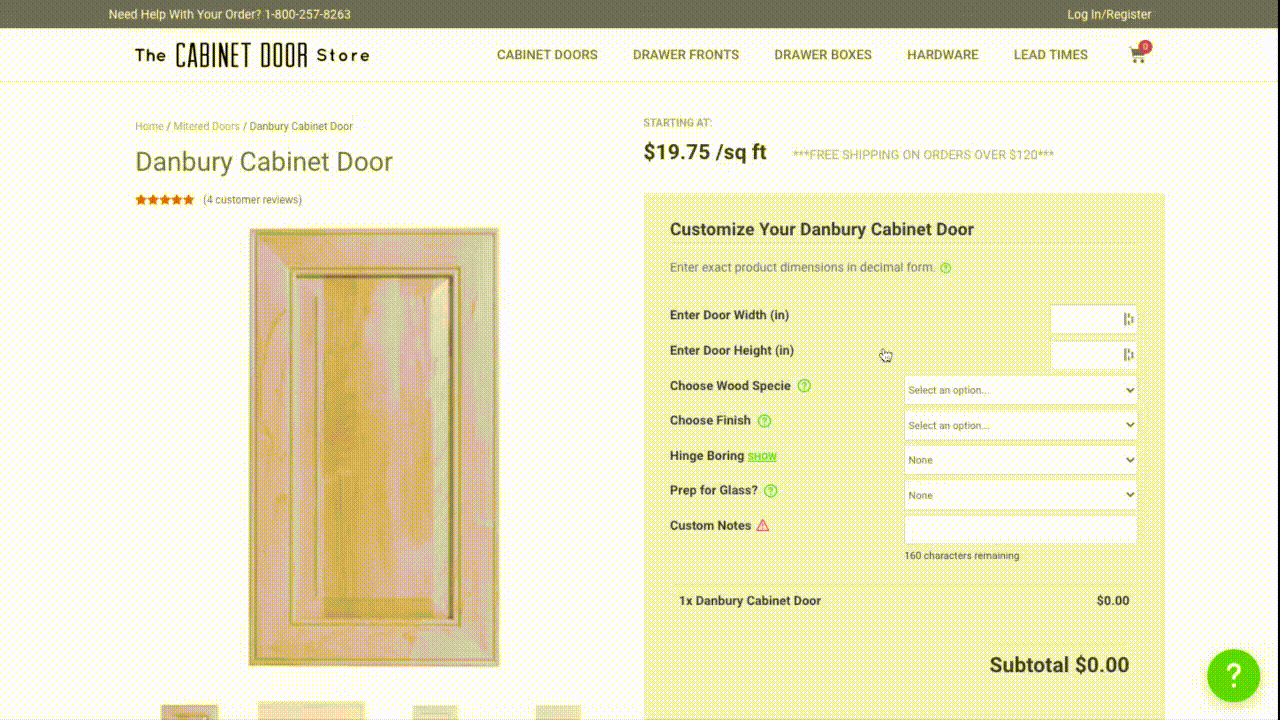
3. Build a searchable, comprehensive knowledge base
A strong knowledge base is one of the most impactful ways to help your customers help themselves.
But to be useful, your knowledge base has to be:
- Thorough, meaning it covers as many customer questions as humanly possible
- Searchable using words your customers use to describe their problems
- Easy to find and navigate
If your knowledge base doesn’t hit the mark, you’ll confuse your customers and you’ll still deal with a higher volume of calls than you’d like to.
Here are a few tips that will help you find as many topics as your customers have questions about:
- Analyze as much customer support correspondence as you can. List all the topics you find and prioritize those that happened most recently and most often.
- Involve other teams. Talk to marketing, sales, and customer research folks as each of them has a unique perspective of what your customers need and where they get stuck.
- Interview your best customers. Speak with customers that have been with you the longest and/or spent the most money on your products and explore areas they’ve needed your support.
Use these topics to build your knowledge base and develop a process to revise, update, and add more content to it regularly.
You’ll end up with a knowledge base that’s fast and comprehensive, just like the one from TackleBox:
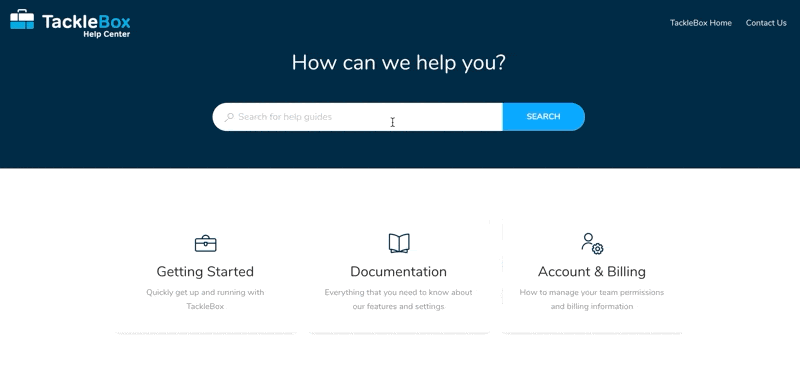
Follow these help article best practices to make the most of your knowledge base:
- Build paths for different use cases. If an article covers a dozen scenarios at once, it’s like a support agent listing a dozen options before letting the customer speak. Avoid this mistake by letting your customer choose options based on their situation.
- Make help articles easy to work through. Use small steps and help your customer experience wins early as they progress through your help article. They’ll reach their goal sooner and feel good in the process.
- Use media like photos, screenshots, videos, GIFs. You can often replace paragraphs of text with a simple image or screencast. This helps customers replicate your instructions easily; it also removes any confusion and speeds up the journey to a solution.
4. Deliver your knowledge base anywhere customers need it
You know that comfort of shopping in-store, knowing you can get help from a sales assistant if you need to within 10 seconds or less?
That sales assistant is a walking knowledge base, and your (non-human) knowledge base can create that same type of comfort right on your website or in your product. Embed the option to get help in every place your (potential) customer may need it.
If your tool of choice allows you to, tailor your embedded knowledge base to the user seeing it. Think: the device they’re using, the plan they’re on, the last time they logged in, and more. This will help them get their answer before they even think of calling your customer support.
At Stonly, we make our knowledge base hyper-relevant to the user everywhere—even on our homepage. Potential Stonly customers can schedule a demo or talk to our team right away, while existing Stonly customers get tailored help:
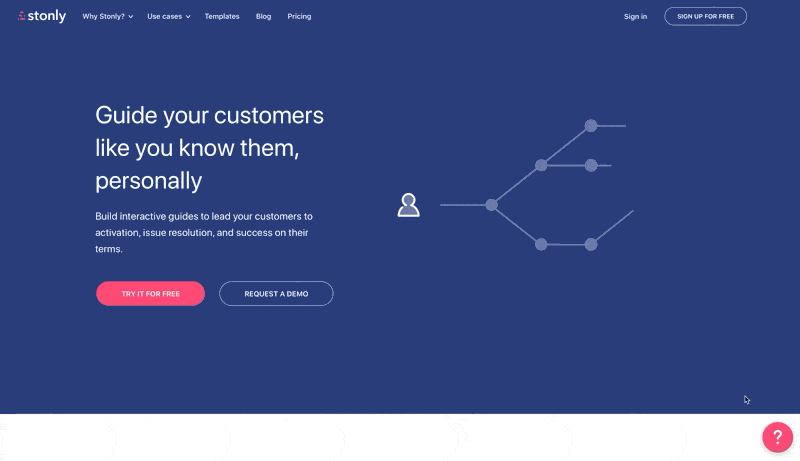
5. Build self-serve options into your contact page
Another way to empower your customers to help themselves before calling you is by embedding self-serve options right onto your contact page.
This is a gentle way to say: “We know you’re stuck on something, but we’ve answered hundreds of questions already, and chances are we answered yours, too. If we haven’t, then contact us and we’d be happy to help.”
TransferWise did this wisely (pun intended) with their Help page. It’s the first page you see after clicking on the question mark sign from your account—the only way to start the process of contacting them.
Then, they list:
- Their current big announcement, one that impacts most or all customers (these are things like fee changes or their rebrand)
- The search bar
- Transfers from your account you might need help with
- A list of main knowledge base categories
- Finally, a Contact us button
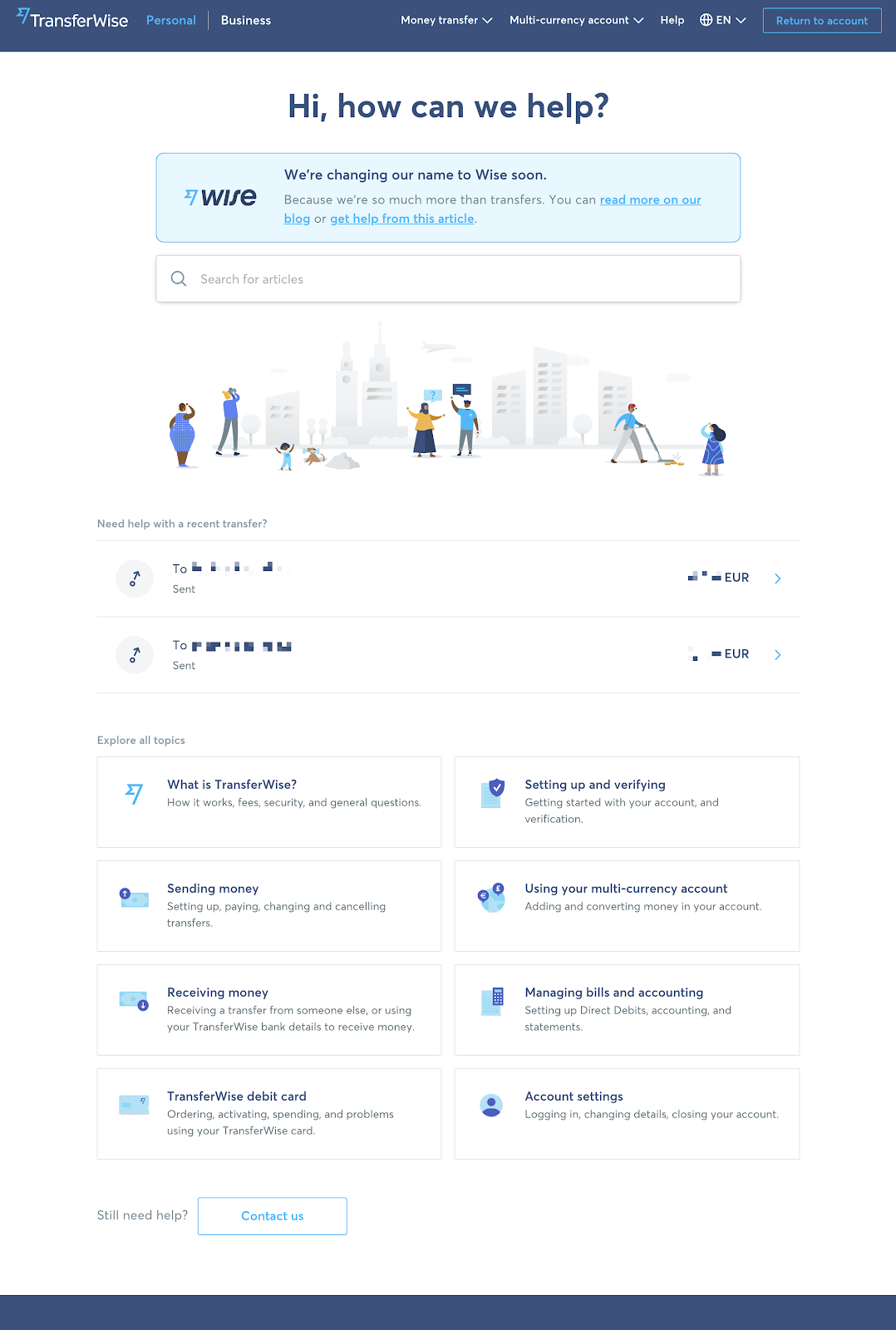
Even if customers don’t proactively search TransferWise’s knowledge base before they reach this page, they get a chance to do so here. More often than not, they’ll find the exact answer they need in just a few clicks.
Who’d waste their time on the phone when all it takes is 15 seconds of clicking?
6. Offer text-based or live chat support first
Text-based support options like web chat and SMS sit half-way between phone support and self-serve support options we’ve covered.
They’re convenient because your agents can support multiple customers at once, which means there’s a much smaller chance you’ll hit full support capacity and make customers wait. Your customers can write to you while they commute, eat, or work.
Texting is practical, and if you can, we recommend you introduce it as a support option.
If you do so, keep these two caveats in mind:
- If there are things you can only help with over the phone, disclaim it next to your prompt for customers to message you. This particularly applies to banks and other organizations with strict legal and security requirements. Don’t try to deflect calls that can’t be deflected. You’ll frustrate your customers more than if they called you right away (even if they had to wait on hold).
- Don’t package a chatbot as a live chat experience. Most chatbots are more of a hurdle than help because they point to FAQ articles, keep customers from a live agent, and give unhelpful answers. Bots need to be trained with lots of data, and most companies just don’t have that. An interactive knowledge base delivered anywhere in your app or on your website is a much better chatbot alternative.
7. Create a community of customers that help each other
Finally, you can build a closed community of your customers and empower them to share their wins, tips, and solutions to common issues.
Great examples of customer communities are PicMonkey’s Facebook group (1.5K members), Ahrefs’ Facebook group (14.3K members), and Upwork’s community portal (over 7 million members).
Here’s an example of PicMonkey’s customers helping each other in the Facebook group:

Running customer groups isn’t just a great way to help customers get answers quickly. They also help you:
- Turn your most engaged customers into brand ambassadors
- Learn from your customers, including where they struggle, what they need, and what helps them succeed
- Interact with customers on an individual level, share customized advice and resources, and share product and feature updates (which also allows you to get instant feedback from customers)
As a result, you can keep improving your knowledge base with rich content and most relevant insights from customers.
Deflect calls and tickets for maximum efficiency and customer satisfaction
You can’t read your customers’ minds, but with these call deflection techniques, you can get pretty close. How? By diving deep into the pain points they experience and the solutions they need.
This gives you the intel you need to build exceptional low-touch and mid-touch support solutions. Your agents can then focus on customer calls that need their attention and skill set—and make the strongest impact.
